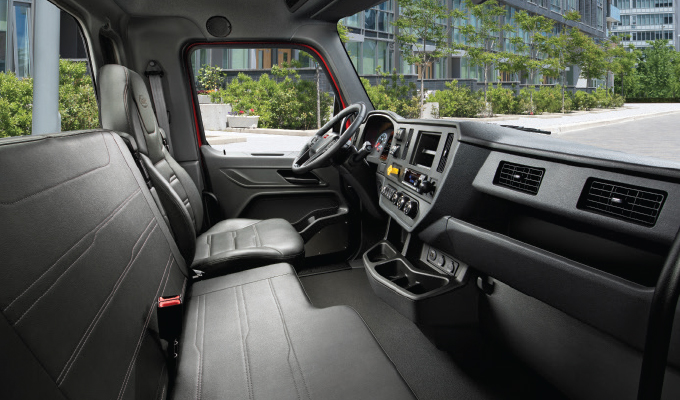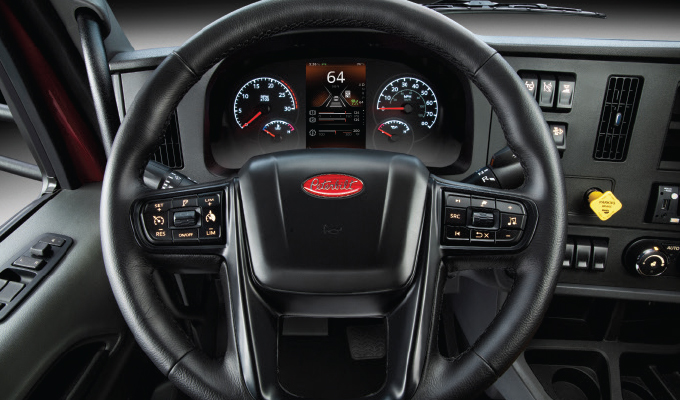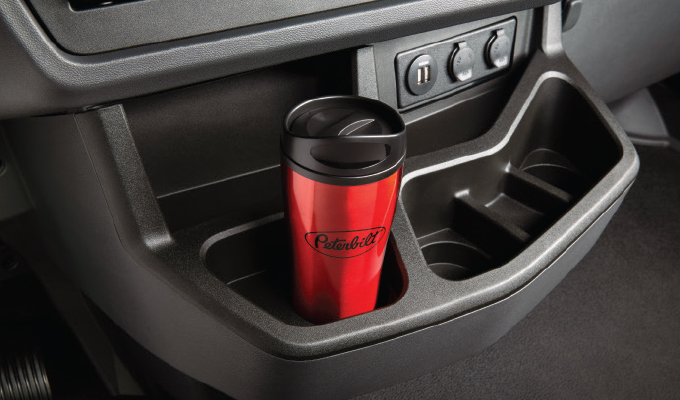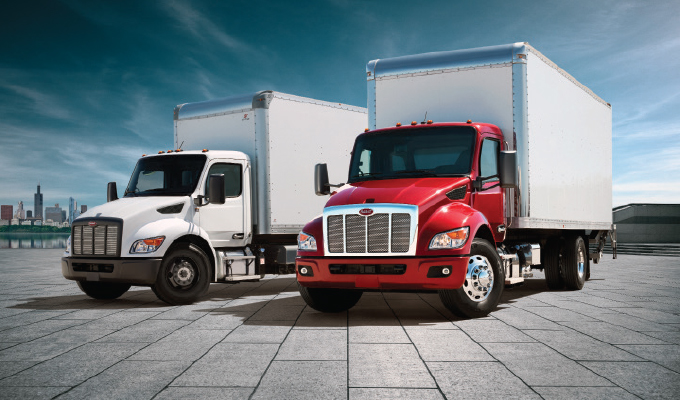By Jade Brasher
Let’s face it. Our nation runs on the backs of vocational truck drivers. When the shutdowns happened last year, the truckers were deemed essential. Without those working in the utility segments, delivery, and even dump and garbage segments, our lives wouldn’t be the same.
When you’re running an essential operation, it’s best to run it in trucks that you can count on. However, these trucks shouldn’t only be reliable. They should be capable enough to withstand anything the workday can throw at it, while also being economical to ensure your business makes a profit at the end of the day.
When redesigning its medium-duty lineup, Peterbilt took great care in creating trucks that drivers would love to operate with features that owners couldn’t resist. I had an opportunity to get into the cabs of the Peterbilt Model 535 and 536 in the spring, and I’m here to report. From the capability of the trucks to their comfortable, practical perks, I have the feeling these medium-duty Peterbilts have what it takes to be a hit in the vocational segment.
UNDER THE HOOD
A truck that’s used in essential operations should feature a powertrain that steps up to the challenge. Peterbilt’s PACCAR powertrain does just that. Under the hood of the Model 535 and 536, owners have the option of a PACCAR PX-7, PX-9, or CNG engine. The PACCAR PX-7 offers 200 to 360 hp. The PX-9 is for larger vocational jobs and offers up to 450 hp. Pairing the engine with PACCAR’s new TX-8 transmission offers more benefits.
The new PACCAR TX-8 automatic transmission shifts the Model 535 and 536 into action. PACCAR built the new transmission to provide a best-in-class power to weight ratio and up to 5% fuel savings compared to other transmissions. Additionally, the TX-8 is designed to be the perfect complement to PACCAR’s PX engines in vocational applications. The lightweight, quiet-running TX-8 offers a maximum torque rating of 1,000 lb-ft and up to 57,000 lbs GCWR. And finally, your essential business meets reliable. Peterbilt designed the TX-8 to reduce the total cost of ownership with oil change intervals at 150,000 miles and fully encasing all sensors, wiring, and connections to minimize exposure to the elements. Now if only reliable were paired with comfortable…

DRIVER PERKS
Did someone ask for a comfortable cab? Peterbilt’s new medium-duty lineup features a cab that is 8-inches wider, so even if your operation calls for a bench seat to fit three people in the front, they’ll still have plenty of space. The cab height of the Model 535 and 536 is also 3 inches lower than previous models. This combined with anti-slip, stair-style steps and a knurled grab handle make it easier and safer for your drivers and crew to enter the cab.
The cab also features 4.6 cu-ft of storage. Find that storage under the seat, in the door, overhead, and on top of the dash. There’s also access to the under seat storage from the side, which allows drivers and operators to grab what they need under the seat while standing outside the cab. There’s even a flat floor all the way across the cab to help keep it clean. And, you won’t have to worry about wear and tear on the truck’s pristine interior because textures and surfaces inside the truck are scratch resistant and don’t absorb odors.
For the driver who works during all hours of the day, an interior pin light above the dash prevents drivers from having to turn on all interior lights to access their mug, thermos, or something else in the cup holder area. I personally love this feature because it keeps drivers’ eyes from having to adjust from nighttime darkness to bright interior lights and back.
And we can’t talk about the new medium-duty lineup without mentioning the new instrument cluster with 7-inch high-resolution display. The display includes an analog speedometer and tachometer, but the 7-inch display shows drivers important information at a glance. Drivers can toggle through the menu using buttons on the steering wheel. The display is fully integrated with Peterbilt’s Advanced Driver Assistance System (ADAS).

SAFETY IS ESSENTIAL
Speaking of Peterbilt’s ADAS, let’s look at it a little more closely. Peterbilt offers the system in its medium-duty and heavy-duty lineup. The system uses advanced radar and camera technology to detect objects that could cross the truck’s path. The system, in conjunction with advanced software and powertrain integration, will then cause the truck to slow down or even stop to avoid a collision.
Aside from the advanced technology creeping into every truck on the market, Peterbilt designed the cab itself with safety in mind. This includes larger windows for visibility, the lower cab, the stair-style steps, and grab handles previously mentioned.

BEHIND THE WHEEL
When your business employs non-CDL holders, I believe it’s important to supply them with a truck that creates a seamless transition from the vehicle they drive to work and the vehicle they drive for work. Unless you train your drivers—which, you should—they might be overwhelmed at the task of driving a truck loaded with equipment.
Thankfully, the Model 535 and 536 were easy to drive. The trucks’ maneuverability around tight curves and ability to get up to a comfortable speed relatively quickly was impressive. I drove a both trucks with unloaded box bodies of different sizes on the back, and even still, they handled well.
At a time when employee and drivers shortages abound, perhaps the Model 535 and 536 is just the truck to keep your essential business running smoothly.
About the Author
Jade Brasher is the editor of Modern WorkTruck Solutions magazine. A graduate of
The University of Alabama, Jade resides in Kennesaw, Georgia, and enjoys writing about her town, travel, and of course, work trucks. Reach her at jade@mwsmag.com. Find out more about the Peterbilt Model 535 and 536 and the new medium-duty lineup, visit www.peterbilt.com.




